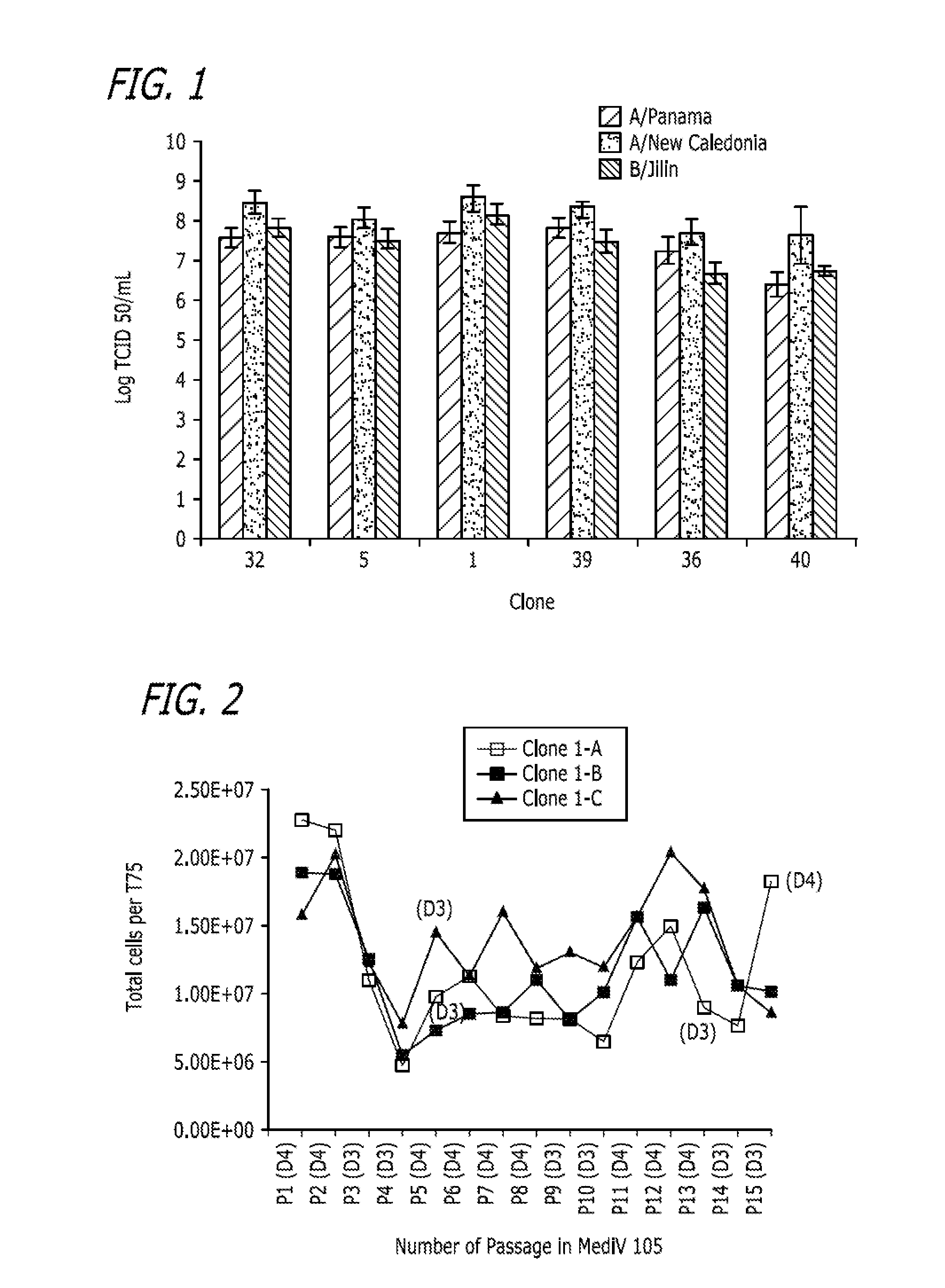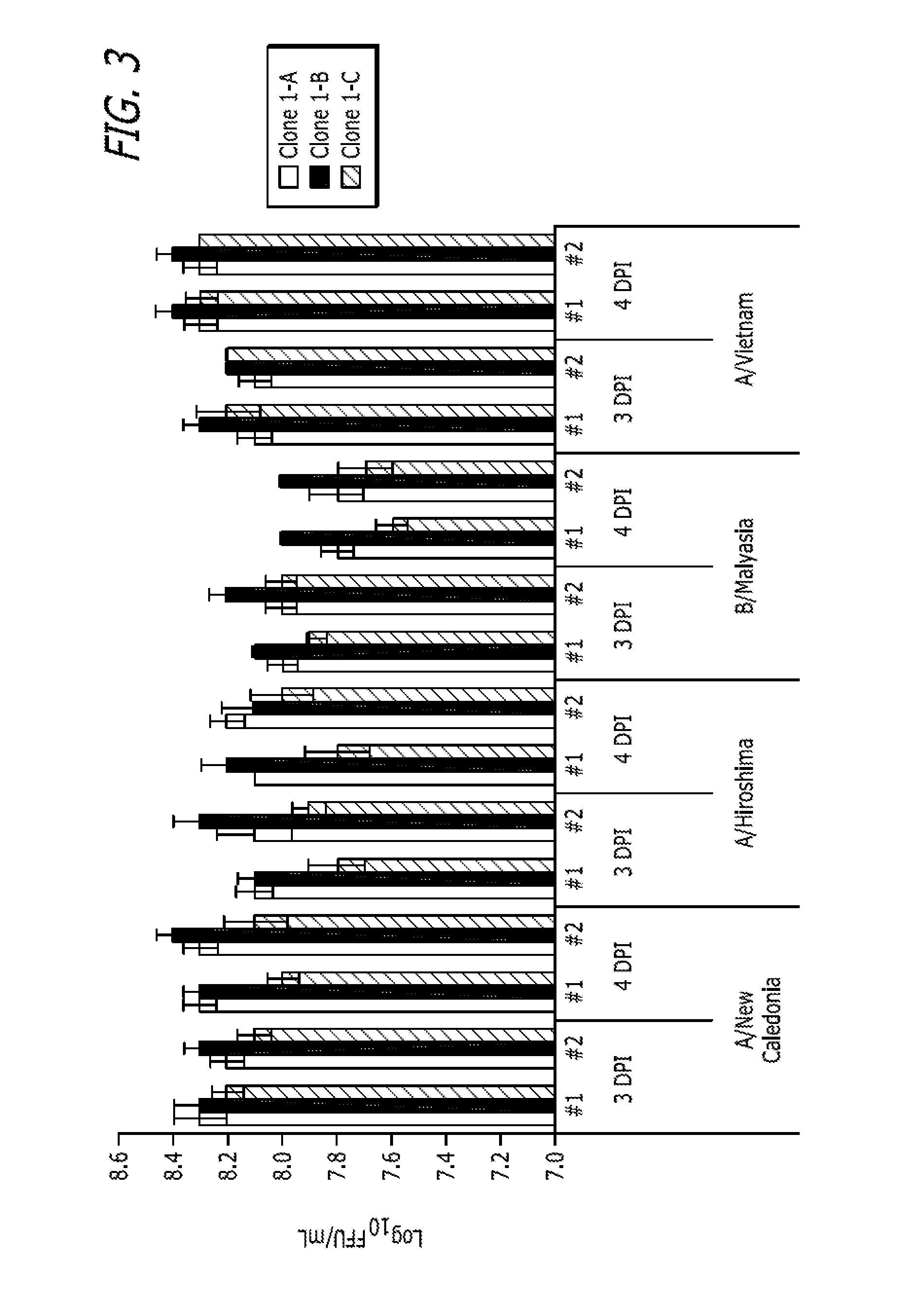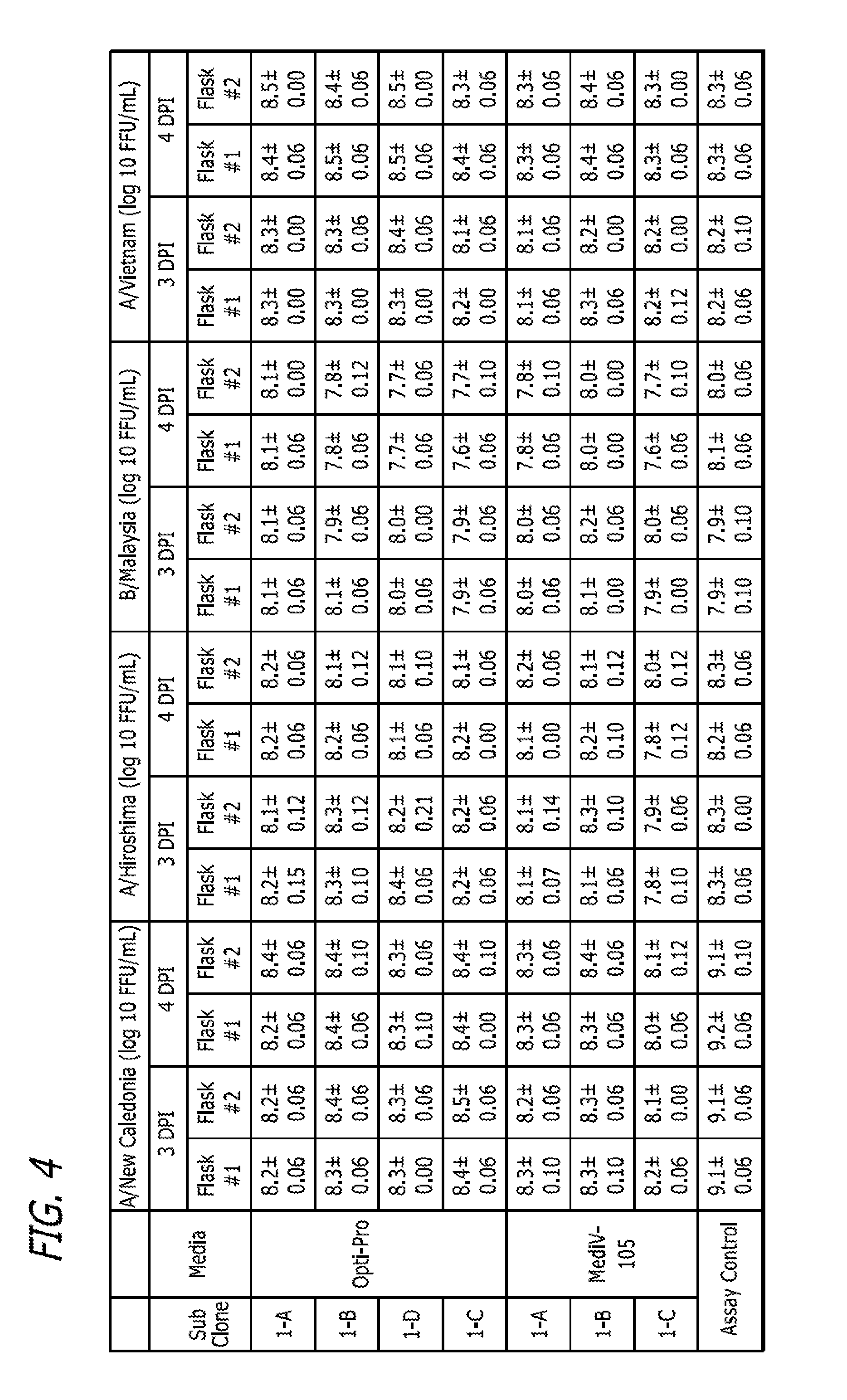Method of purifying influenza virus and removing MDCK cell DNA contaminants
a technology of influenza virus and mdck cell line, which is applied in the field of new mdck cells, can solve the problems of long lead time required to produce vaccines, problems such as the inability to address outbreaks, and the inability to remove mdck cell lines,
- Summary
- Abstract
- Description
- Claims
- Application Information
AI Technical Summary
Benefits of technology
Problems solved by technology
Method used
Image
Examples
example 1
Identification of a MDCK Cell Line that Supports High Viral Replication in Serum Containing Media
[0263]This example describes identification and selection of an MDCK cell line that supports replication of influenza viruses to high titers when the MDCK cell line was cultured in Dulbecco's Modified Eagle's Medium (DMEM) media comprising 10% Fetal Bovine Serum (FBS). The process is outlined in FIG. 5A.
[0264]One vial of MDCK cells (ATCC Accession No. CCL-34; Lot 1805449; passage 54) obtained from the ATCC was thawed and inoculated into a T-25 flask (Corning) containing 10 ml of Dulbecco's Modified Eagle's Medium with L-glutamine (DMEM) and 10% fetal bovine serum (FBS, Defined). Cells (passage 55) were incubated at 37±1° C. with 5±1% CO2 for 3 days. On day 3, the cells were passaged to a T-225 flask (passage 56). Three days after seeding, cells were passaged to 4×T-225 flasks (Passage 57). For each of the passages in DMEM with L-glutamine and 10% FBS in a T-25 or T-225 flask, the procedu...
example 2
Adaptation of an MDCK Cell Clones to Growth in Serum-Free Media
[0282]This example describes adaptation of MDCK Clones 1, 55, 56, 57, and 58 and Subclones 1-A, 1-B (P5 / P85), 1-C and 1-D to growth in MediV 105 serum-free media. Clones 56, 57, and 58 were derived from MDCK cells (ATCC Accession No. CCL-34) and adapted to growth in media containing serum in a manner similar to that described in Example 1. The process is outlined in FIG. 5B.
[0283]First, one vial of the MDCK Clone Subclone 1-D (frozen at passage 5 since subclone, P85 in total) was thawed and inoculated into a T75 flask containing 35 ml of Dulbecco's Modified Eagle's Medium / Ham F12 (DMEM / F12) with L-glutamine and 10% fetal bovine serum (FBS, Defined), and incubated at 37° C. with 5% CO2 for 3 days. On day 3 the cells were passaged to a T225 flask (Passage 7 / P87). Next, the MDCK Subclone D cells were adapted in serum-free medium MediV 105 for 5 passages.
[0284]At passage 5 in MediV 105, cells were frozen as an accession bank...
example 3
Comparison of MDCK Cell Growth in MediV 105 and M18M
[0294]This example describes the results of an experiment to assess the relative growth of MDCK cells in MediV 105 and M18M media. The formulations of MediV 105 and M18M are described in Example 10, below.
[0295]In these experiments, 1 vial of serum free-adapted subclone 1-A was thawed and inoculated into a T-75 flask containing either MediV 105 or M18M, respectively. The T-75 flasks were then placed in a 37 C incubator supplied with 5% CO2 and the cells were allowed to grow under these conditions for 3 to 4 days. Cell growth rate and viability were monitored the end of incubation by trypsinizing the cells from the T-75 flasks followed by counting the total and viable cells using a Cedex cell counter or over the next 88 hours by Cedex and / or NucleoCounters.
[0296]Results from this experiment are presented as FIG. 6. As shown in FIG. 6, subclone 1-A was able to replicate in both MediV 105 and M18M. However, cells decreased in viabilit...
PUM
 Login to View More
Login to View More Abstract
Description
Claims
Application Information
 Login to View More
Login to View More - R&D
- Intellectual Property
- Life Sciences
- Materials
- Tech Scout
- Unparalleled Data Quality
- Higher Quality Content
- 60% Fewer Hallucinations
Browse by: Latest US Patents, China's latest patents, Technical Efficacy Thesaurus, Application Domain, Technology Topic, Popular Technical Reports.
© 2025 PatSnap. All rights reserved.Legal|Privacy policy|Modern Slavery Act Transparency Statement|Sitemap|About US| Contact US: help@patsnap.com



